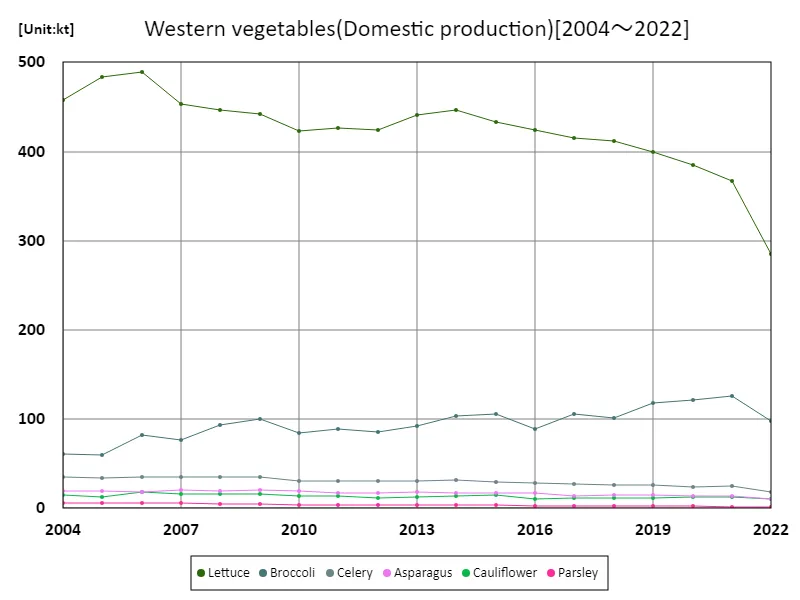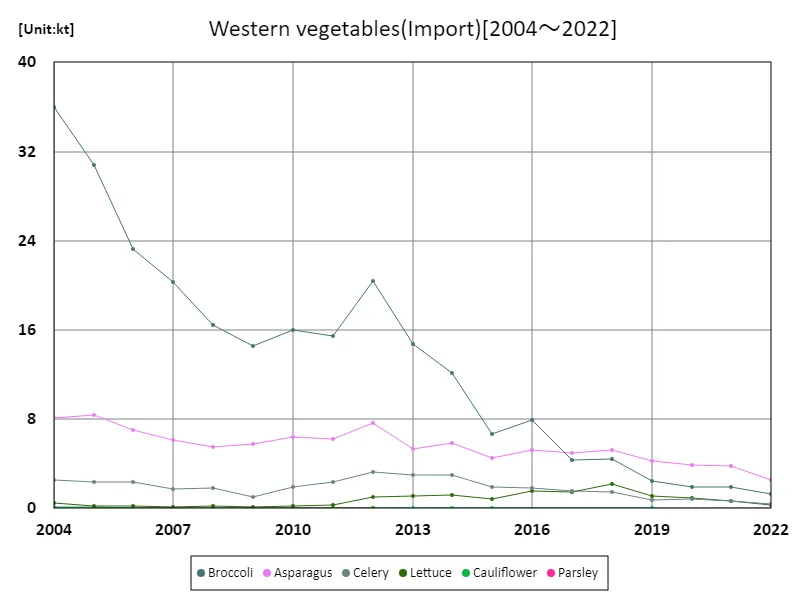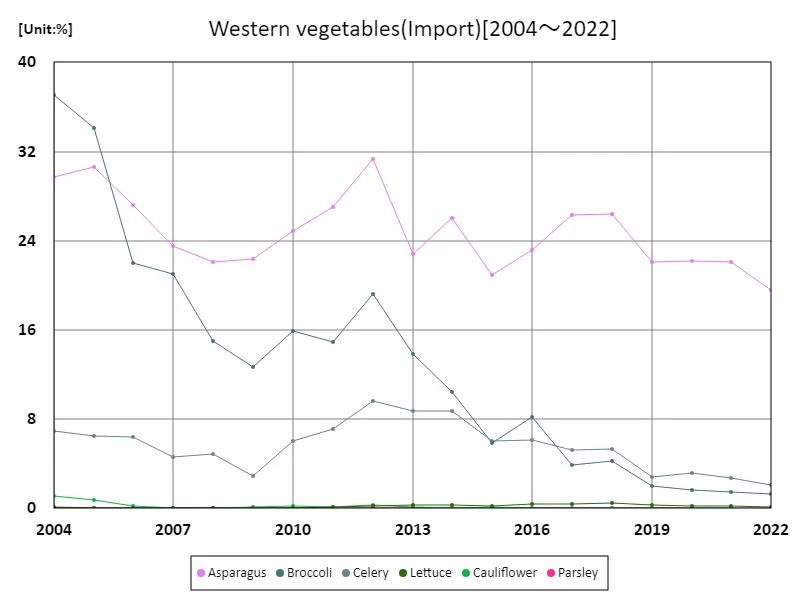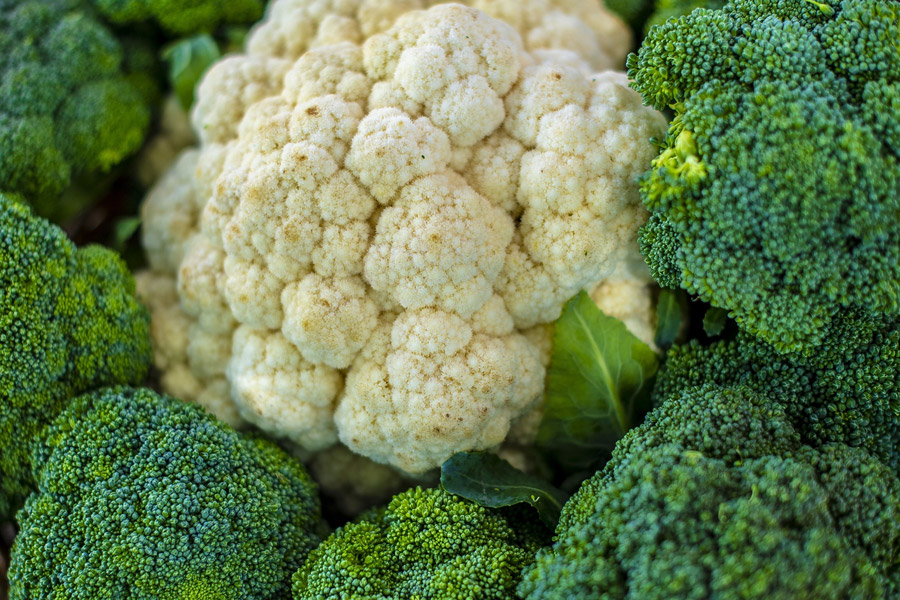Abstract
In recent years, Japanese agriculture has seen significant trends in vegetable production and imports. Domestically, lettuce remains a staple, with a peak yield of 285kt in 2022, reflecting a strong focus on local cultivation. However, imports have also played a vital role, with asparagus standing out at 2.53kt, indicating growing demand for diverse vegetable options. Notably, asparagus comprised 19.6% of total vegetable imports, highlighting its popularity among consumers. This suggests a shift towards integrating Western vegetables into the Japanese diet, driven by changing tastes and an increasing preference for variety in culinary experiences. Overall, the balance between domestic production and imports reflects evolving agricultural dynamics and consumer preferences.
Domestic production of Western vegetables
Japanese agriculture has experienced notable trends in the production of Western vegetables from 2004 to 2022. Lettuce has historically led domestic production, peaking at 490kt in 2006. However, current yields have declined to 58.2% of that peak, indicating potential shifts in consumer preferences or production challenges. Other Western vegetables, while less prominent, have also gained traction, reflecting a diversification in the market. Factors such as urbanization, changing dietary habits, and increased health consciousness may contribute to the evolving landscape of vegetable consumption in Japan. Overall, while lettuce remains a cornerstone, the industry is adapting to meet contemporary tastes and demands.


The maximum is 490kt[2006] of Lettuce, and the current value is about 58.2%
Import quantity of Western vegetables
In 2022, Japanese vegetable imports showcased distinct trends, with broccoli emerging as the leading import, reaching a total market price of 36kt. This reflects a growing consumer preference for nutrient-rich vegetables, aligning with health trends in Japan. The increase in broccoli imports indicates not only a rising demand but also the influence of Western dietary habits. Moreover, the distribution of imports across prefectures suggests regional variations in vegetable preferences, with urban areas likely driving higher demand for diverse produce. As the market evolves, the emphasis on fresh and versatile vegetables like broccoli highlights a shift towards healthier eating patterns, reshaping Japan’s agricultural landscape.


The maximum is 36kt[2004] of Broccoli, and the current value is about 3.5%
Imported (proportion) quantity of Western vegetables
From 2004 to 2022, the import proportion of Western vegetables in Japan has revealed important trends, particularly regarding broccoli. In 2004, broccoli reached a peak import proportion of 37.1%, reflecting its popularity and growing acceptance in Japanese cuisine. Currently, this figure has decreased by 3.5%, indicating a slight decline in demand or an increase in domestic production of similar vegetables. The trends suggest evolving consumer preferences, with a possible shift toward other vegetables or changes in dietary habits. Despite this decrease, broccoli remains a significant player in the market, highlighting Japan’s ongoing integration of Western vegetables into its diverse culinary landscape.


The maximum is 37.1%[2004] of Broccoli, and the current value is about 3.5%



Comments